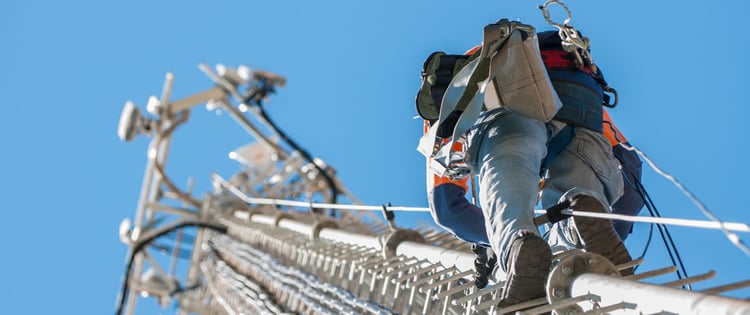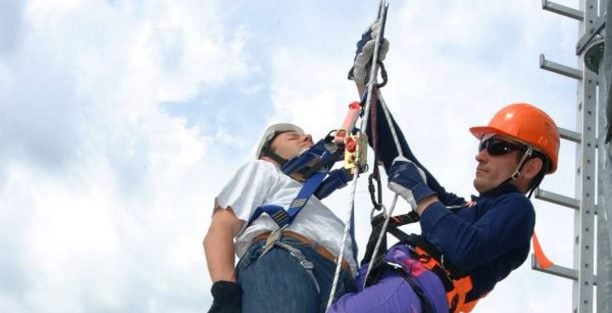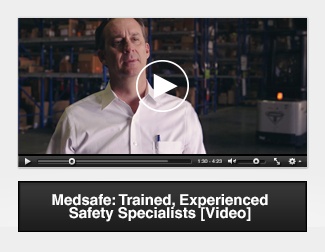 Fall protection is a hot topic on most jobsites these days, and rightfully so. The dangers of working at height should not be taken lightly. Employers are required to train their workers, provide them with the equipment, and show them how to use it. But fall protection training doesn’t end there. Workers also need to know what to expect during and after a fall event. More specifically, there needs to be a fall rescue plan in place.
Fall protection is a hot topic on most jobsites these days, and rightfully so. The dangers of working at height should not be taken lightly. Employers are required to train their workers, provide them with the equipment, and show them how to use it. But fall protection training doesn’t end there. Workers also need to know what to expect during and after a fall event. More specifically, there needs to be a fall rescue plan in place.
The employer is responsible for coming up with a fall rescue plan. It doesn’t need to be written down, but it does need to be communicated to all employees. A rescue plan can vary from job to job. In fact, you’re encouraged to come up with a unique plan for every task you do.
The fall rescue plan should be based on the specific situation at hand. For instance, the rescue methods might be different for an ironworker who’s suspended 40 feet in the air than it is for a an electrician who is only 10 feet in the air.
Taking a Fall
Regardless of who you are or where you’re working, no one wants to experience a fall. But employees need to learn what taking a fall could be like. This needs to be covered during training.
If workers are wearing all the right equipment, and are using it correctly… injuries should be minimal. However, taking a fall puts a significant amount of strain on a person’s body. They can still experience things like whiplash, bruising, and soreness.
Additionally, this could be considered a traumatic event for a lot of people. Even if they didn’t receive any significant injuries. It a scary situation to find yourself in. S ome employees will panic, faint, or go into shock.
During their training, explain to your employees the importance of remaining calm. Remind them that you have a fall rescue plan. Assure them that they will be rescued as quickly as possible.
OSHA Requirements
OSHA recognizes the importance of rescuing employees as quickly as possible. Standard 1926.502(d)(20) states that employers must provide “prompt” rescue in the event of a fall.
What’s the reasoning for this? Prolonged exposure after a fall could result in adverse health effects. Specifically, suspension trauma. Suspension trauma can lead to heart and kidney failure. It happens when a person is unable to maintain proper blood flow.
So how do you define “prompt” rescue?
Everyone experiences suspension trauma at different rates. Based on scientific research, 10-15 minutes is the absolute maximum that an employee should be left suspended. However, irreversible health effects can be seen in as little as 5-6 minutes.
Most professionals recommend that prompt rescue take place within 3-5 minutes.
The faster you can get them down, the better. Employees are less likely to suffer from adverse health effects if you can get them to safety as quickly as possible.
Suspension Trauma
Suspension trauma is a deadly condition brought on by an extended period of orthostatic intolerance. Orthostatic intolerance happens when a person remains in a sedentary position for a prolonged period of time. Blood accumulates in the veins, and interferes with proper blood flow.
When blood cannot circulate throughout the body, vital organs do not get enough oxygen. Without an adequate supply of oxygen to the brain, fainting will occur. Kidney failure can also happen, as the kidneys require oxygen-rich blood to function properly.
If not addressed quickly, these conditions could be fatal.
Prolonged suspension from fall arrest systems could cause orthostatic intolerance. The suspension trauma that employees can experience will result in unconsciousness first, potentially followed by death. This can occur all within 20-30 minutes.

Having a Rescue Plan
That’s why it’s important to have a rescue plan in place before your employees go to work. Be prepared for the possibility of a fall. That way, when an employee does take a fall, you already know what to do. Having a fall rescue plan is just as important as having fall protection equipment.
Without a plan in place, it can take 5-6 minutes or longer just to figure out how to get someone down. By that time, you’ve already exceeded the timeframe for “prompt” rescue.
Rescuing plans will vary from site to site. And even within the same site. Make sure everyone in the area understands how to rescue their fellow workers. Tell them what their options are. Teach them to think on their feet and to get creative if they have to. But also explain that the rescuers should never put their own lives on the line during a rescue attempt.
Here are some things to keep in mind:
- Is the fallen worker conscious, or unconscious?
- Are there obstructions between the fallen worker and the ground?
- How far from the ground is the employee?

These are basic questions to help get your started. But keep in mind that a fall rescue plan doesn’t have to be complex. It might be something as simple as getting a ladder, or using an aerial lift. The fall rescue plan should cover these three essentials:
- Minimizes suspension time
- Recognizes signs and symptoms of suspension trauma
- Performs rescue and treatment as quickly as possible
If rescue cannot be performed within 3-5 minutes, employees should be instructed to “pump their legs” to maintain proper blood flow. Suspension straps are also a great option.
These little devices can be clipped to a person’s fall harness. After a fall, the employee deploys the straps. He then slips his feet into the loops. Suspension straps help relieve some of the weight and pressure from the harness.
The two rescue methods that can be used in the event of a fall are self rescue and assisted rescue. Let’s take a closer look at each.
Self Rescue
Sometimes when an employee takes a fall, he’s able to rescue himself. Depending on how far he fell, it might be as simple as pulling himself back onto the platform. Employees who use SRL’s are typically able to rescue themselves.
Self retracting lifelines, or SRL’s, are supposed to stop a fall within a maximum of 3.5 feet. But because SRL’s can be extended up to 50 feet or more, employees need to account for swing radius. If an employee has an SRL extended out to 20 feet, he could end up falling much further than 3.5 feet.
Employees might also be able rescue themselves if they can reach a nearby platform, ladder, or structure. Even if a person can rescue himself though, they still need to be evaluated for injuries.
Read more about swing falls on our FAQ page.
Assisted Rescue
When an employee is unable to pull himself to safety, others working nearby must jump to action. It doesn’t matter if the rescuers are workers or supervisors. They just have to be trained. Depending on the severity of the situation, you might want to call 911 anyway. But don’t wait for them to arrive -- remember, you need to get the employee down as quickly as possible.
Rescuers can use nearby lifts, ladders, and mobile equipment to rescue a fallen worker. An aerial lift is typically the best option. Articulating boom lifts can maneuver around structural steel and other elevated obstructions.
Whatever you come up with for a plan, make sure it’s clearly communicated.
More About Fall Rescue Plans
Whenever an employee takes a fall, remember to remove all of his fall protection equipment from service. Replace it with new gear.
With proper training, your team should know what to expect during and after a fall. Workers should be aware of suspension trauma. Make sure they understand the importance of getting someone down quickly. And always have a fall rescue plan in place.








